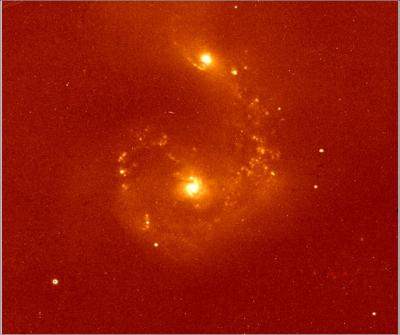UCLA astronomers have built a new scientific instrument to study the earliest galaxies in the universe.
The five-ton instrument – dubbed MOSFIRE (Multi-Object Spectrometer for Infra-Red Exploration) – has been installed in the Keck I Telescope at the W.M. Keck Observatory atop Mauna Kea in Hawaii.

MOSFIRE operates by gathering light in infrared wavelengths – invisible to the human eye – allowing it to penetrate cosmic dust and see distant objects whose light has been stretched or “redshifted” to the infrared by the expansion of the universe.
“The instrument was designed to study the most distant, faintest galaxies. When we look at the most distant galaxies, we see them not as they are now but as they were when the light left them that is just now arriving here,” explained UCLA physics and astronomy professor Ian S. McLean.
“Some of the galaxies that we are studying were formed some 10 billion years ago – only a few billion years after the Big Bang. We are looking back in time to the era of the formation of some of the very first galaxies, which are small and very faint. That is an era that we need to study if we are going to understand the large-scale structure of the universe.”
According to McLean, MOSFIRE will make it easier for astronomers to identify faint galaxies, “families of galaxies” and merging galaxies. The sophisticated instrument is also expected to facilitate detailed observations of planets orbiting nearby stars, star formation within our own galaxy and the distribution of dark matter in the universe.
“We would like to study the environment of those early galaxies,” he said. ”Sometimes there are large clusters with thousands of galaxies, sometimes small clusters. Often, black holes formed in the centers of galaxies.”
Light collected by the Keck I Telescope was fed into MOSFIRE for the first time on April 4, producing the image above. Astronomers are expected to start using MOSFIRE by September, following testing and evaluation in May and June.
MOSFIRE allows astronomers to take an infrared image of a field and to study 46 galaxies simultaneously, providing the infrared spectrum for each galaxy. Currently, it can take three hours or longer to obtain a good spectrum of just one galaxy.
Ian S. McLean built the world’s first infrared camera for wide use by astronomers in 1986 and has since designed eight increasingly sophisticated infrared cameras and spectrometers which split light into its component colors.






